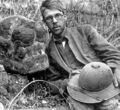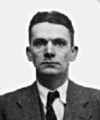Template:Selected anniversaries/June 7: Difference between revisions
No edit summary |
No edit summary |
||
| (31 intermediate revisions by the same user not shown) | |||
| Line 1: | Line 1: | ||
<gallery> | <gallery> | ||
|| | || *** DONE: Pics *** | ||
|| | ||1551: King Edward leaves the Three Brothers pendant with his Lord High Treasurer William Paulet for safekeeping. Pic. | ||
|| | ||1594: Roderigo Lopez executed ... physician-in-chief to Queen Elizabeth I of England from 1581 until his death by execution, having been found guilty of plotting to poison her. A Portuguese converso or New Christian of Jewish ancestry, he is the only royal doctor in English history to have been executed, and may have inspired the character of Shylock in Shakespeare's The Merchant of Venice, which was written within four years of his death. No DOB. Pic. | ||
|| | ||1787: William Daniel Conybeare born ... geologist, palaeontologist and clergyman. He is probably best known for his ground-breaking work on marine reptile fossils in the 1820s, including important papers for the Geological Society of London on ichthyosaur anatomy and the first published scientific description of a plesiosaur. Pic. | ||
|| | ||1788: French Revolution: Day of the Tiles: Civilians in Grenoble toss roof tiles and various objects down upon royal troops. | ||
|| | ||1811: Sir James Young Simpson born ... physician, discovers the anaesthetic properties of chloroform. Pic. | ||
||1879 | ||1826: Joseph von Fraunhofer dies ... physicist and astronomer His original work was mainly concerned with optics and spectroscopy. In particular he carried out a classical redetermination of the speed of light by A. H. L. Fizeau's method (see Fizeau-Foucault Apparatus), introducing various improvements in the apparatus, which added greatly to the accuracy of the results. Pic. | ||
||1843: Alexis Bouvard dies ... astronomer. He is particularly noted for his careful observations of the irregularities in the motion of Uranus and his hypothesis of the existence of an eighth planet in the solar system. Pic. | |||
||1862: Philipp Lenard born ... physicist and academic, Nobel Prize laureate. Pic. | |||
||1863: During the French intervention in Mexico, Mexico City is captured by French troops. | |||
||1877: Charles Glover Barkla born ... physicist, and the winner of the Nobel Prize in Physics in 1917 for his work in X-ray spectroscopy and related areas in the study of X-rays (Roentgen rays). Pic. | |||
||1879: Knud Rasmussen born ... anthropologist and explorer. Pic. | |||
||1879: Joan Voûte born ... astronomer and academic. His preliminary account of the parallax of Proxima Centauri was published in 1917, demonstrating that Proxima was the same distance from the Sun as the Alpha Centauri system. Pic. | |||
||1882: George de Bothezat born ... engineer, businessman, and pioneer of helicopter flight. Pic. | |||
File:Sylvanus Morley.jpg|link=Sylvanus Morley (nonfiction)|1883: Archaeologist and spy [[Sylvanus Morley (nonfiction)|Sylvanus Morley]] born. He will conduct espionage in Mexico on behalf of the United States during World War I; the scope of these activities will only come to light after his death. | File:Sylvanus Morley.jpg|link=Sylvanus Morley (nonfiction)|1883: Archaeologist and spy [[Sylvanus Morley (nonfiction)|Sylvanus Morley]] born. He will conduct espionage in Mexico on behalf of the United States during World War I; the scope of these activities will only come to light after his death. | ||
||1886: Richard March Hoe dies ... engineer and businessman, invented the Rotary printing press. Pic. | |||
||1886: Henri Coandă born ... engineer, designed the Coandă-1910. Pic. | |||
||1894: Alexander P. de Seversky born .. pilot and engineer, co-designed the Republic P-47 Thunderbolt. Pic (cool!). | |||
||1896: Robert S. Mulliken born ... physicist and chemist, Nobel Prize laureate. Pic. | |||
|| | ||1899: American Temperance crusader Carrie Nation begins her campaign of vandalizing alcohol-serving establishments by destroying the inventory in a saloon in Kiowa, Kansas. Pic. | ||
|| | ||1900: Frederick Emmons Terman born ... professor and academic administrator. He is widely credited (together with William Shockley) as being the father of Silicon Valley. Pic. | ||
|| | ||1907: Edward John Routh dies ... mathematician, noted as the outstanding coach of students preparing for the Mathematical Tripos examination of the University of Cambridge in its heyday in the middle of the nineteenth century. He also did much to systematise the mathematical theory of mechanics and created several ideas critical to the development of modern control systems theory. Pic. | ||
|| | ||1901: Joseph Numa Wenger born ... Rear-Admiral of the United States Navy who served as the first Deputy Director of the Armed Forces Security Agency (AFSA), and later as the first Vice Director of the National Security Agency, from December 1952 to November 1953, after the separate divisions of the AFSA merged into the NSA. Wenger was one of the leaders responsible for the development of the NSA. Pic. | ||
|| | File:Charles Critchfield ID badge.png|link=Charles Critchfield (nonfiction)|1910: Mathematical physicist [[Charles Critchfield (nonfiction)|Charles Critchfield]] born. He will work on the Manhattan Project, designing and testing the "Urchin" neutron initiator which provides the burst of neutrons that kick-starts the nuclear detonation of the Fat Man weapon. | ||
|| | ||1910: Marion Post Wolcott born ... photographer ... Great Depression, | ||
|| | ||1911: Brooks Stevens born ... engineer and designer, designed the Wienermobile. Pic search. | ||
|| | ||1911: Wang Zhuxi born ... physicist, educator, and philologist. Pic. | ||
|| | ||1914: Boris Levitan born ... mathematician known in particular for his work on almost periodic functions, and Sturm–Liouville operators, especially, on inverse scattering. Pic. | ||
|| | ||1915: The destruction of German Zeppelin LZ37 by Sub-Lieutenant Reginald Warneford. Pic (very stirring!): https://commons.wikimedia.org/wiki/File:The_Great_Aerial_Exploit_of_Lieut_Warneford.jpg | ||
|| | ||1917: First World War: The British Army detonated 19 ammonal mines under the German lines, killing 10,000 in the deadliest non-nuclear man-made explosion in history. https://en.wikipedia.org/wiki/Mines_in_the_Battle_of_Messines_(1917) Pic: map. | ||
||Donald Watts Davies | ||1924: Donald Watts Davies born ... computer scientist who was employed at the UK National Physical Laboratory (NPL). In 1965 he developed the concept of packet switching in computer networking, and implemented it in the NPL network. Pic. | ||
||1929 | ||1929: The Lateran Treaty is ratified, bringing Vatican City into existence. | ||
||1942 | ||1942: Alan Blumlein dies ... engineer ... important. Pic search. | ||
File:Alan Turing (1930s).jpg|link=Alan Turing (nonfiction)|1952: Computer scientist, mathematician, logician, cryptanalyst and theoretical biologist [[Alan Turing (nonfiction)|Alan Turing]] dies. He was influential in the development of theoretical computer science, providing a formalization of the concepts of algorithm and computation with the [[Turing machine (nonfiction)|Turing machine]]. | File:Alan Turing (1930s).jpg|link=Alan Turing (nonfiction)|1952: Computer scientist, mathematician, logician, cryptanalyst and theoretical biologist [[Alan Turing (nonfiction)|Alan Turing]] dies. He was influential in the development of theoretical computer science, providing a formalization of the concepts of algorithm and computation with the [[Turing machine (nonfiction)|Turing machine]]. | ||
File: | File:BOMARC missile battery.jpg|link=BOMARC Missile Accident Site (nonfiction)|1960: [[BOMARC Missile Accident Site (nonfiction)|An explosion in a helium tank causes a fire in a liquid-fueled, nuclear-tipped BOMARC missile]]. | ||
||1967: Anatoly Maltsev dies ... mathematician and academic. Pic search. | |||
||1971: Ken Ballew raid: The Alcohol, Tobacco, and Firearms Division of the U.S. Internal Revenue Service raids the home of Ken Ballew for illegal possession of hand grenades. https://en.wikipedia.org/wiki/Ken_Ballew_raid Pic scene. | |||
||1978: Ronald George Wreyford Norrish dies ... chemist and academic, Nobel Prize laureate. Pic. | |||
||1981: Johannes (Jan) Martinus Burgers dies ... physicist. He will discover Burgers' equation, the Burgers vector in dislocation theory, and the Burgers material in viscoelasticity. Pic. | |||
|| | ||1981: The Israeli Air Force destroys Iraq's Osiraq nuclear reactor during Operation Opera. | ||
|| | ||2000: Alladi Ramakrishnan dies ... physicist and the founder of the Institute of Mathematical Sciences (Matscience) in Chennai. He made contributions to stochastic process, particle physics, algebra of matrices, special theory of relativity and quantum mechanics. Pic. | ||
|| | ||2004: Joseph Leo "Joe" Doob dies ... mathematician, specializing in analysis and probability theory. He will develop the modern theory of martingales. Pic. | ||
|| | File:Apple flowers (7 June 2022) 20220607 195745.jpg|link=Apple flowers (7 June 2022)|2022: '''[[Apple flowers (7 June 2022)]]'''. | ||
</gallery> | </gallery> | ||
Latest revision as of 14:22, 7 June 2024
1883: Archaeologist and spy Sylvanus Morley born. He will conduct espionage in Mexico on behalf of the United States during World War I; the scope of these activities will only come to light after his death.
1910: Mathematical physicist Charles Critchfield born. He will work on the Manhattan Project, designing and testing the "Urchin" neutron initiator which provides the burst of neutrons that kick-starts the nuclear detonation of the Fat Man weapon.
1952: Computer scientist, mathematician, logician, cryptanalyst and theoretical biologist Alan Turing dies. He was influential in the development of theoretical computer science, providing a formalization of the concepts of algorithm and computation with the Turing machine.
2022: Apple flowers (7 June 2022).




